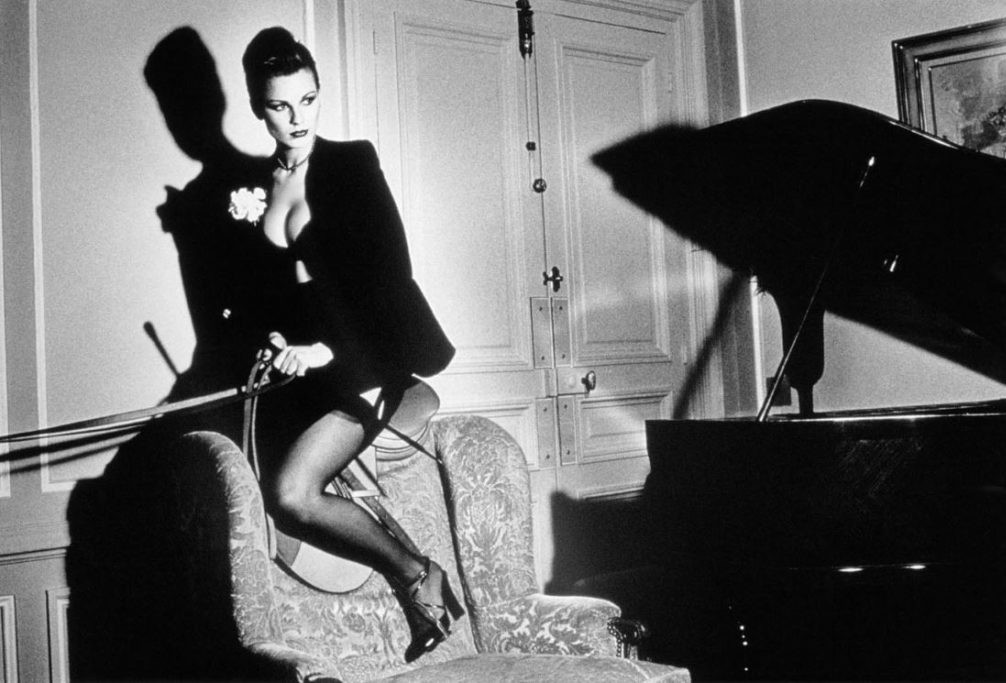(THIS ARTICLE IS MACHINE TRANSLATED by Google from Norwegian)
For some, Helmut Newton (1920–2004) was a feminist, for others he hated women. But the man is not identical with his photographs. As Susan Sontag said in a television program (shown in the film), it is not uncommon for rulers to love their slaves, the executioners to fall in love with their victims, and many misogynistic men say that they love women, but show it in a humiliating way. ». Newton did just that. But to say he hated women would be a simplification. The complexity of the work of this extraordinary master photographer goes far beyond the dualism of man and work.
We can take his historical significance as an example: Today's audience can easily identify the use (and location) of women as objects in his most famous works. Still, as partying and dancing to music by The Cure and Grace Jones, we will remember how liberating his images were when we first saw them – just like the music.
The triumph of visual culture
Of course, it is no coincidence that the film's musical tracks largely consist of songs about images and glances. The music, along with Newton and his black-and-white photographs, was a catalyst for an important break with the culture of the global north, and a rebellion against the tastes and high culture of the elites.
Men perform, women show up.
How intense and colorful this rebellion really was, we realize when we hear Newton declare: "For me, there are two fy-words ('dirty words') in photography, the first is 'art', the second 'good taste'." Photographs were, until then, considered subordinate to the text. The uprising strengthened and liberated the women. They were not only objects of the universal gaze, but also – by being aware that they were seen – the bearers of what was considered appropriate and 'good taste'.
Newton's images of women in inappropriate contexts and positions are, just like chickens in high heels or diamonds on a slaughter bench, a celebration of this newfound freedom of speech.

Female gaze
The film's director, Gero Von Boehm, has collected private footage and film clips from Newton's work and private life that have never been shown before. Central to the film are candid interviews with several of the female stars in his iconic portraits and fashion photographs, from Grace Jones and Charlotte Rampling to Isabella Rossellini and Nadja Auermann. Their interpretations of Newton's photographic work are comprehensive, thorough and enlightening. They all deny the alleged sexism in Newton's paintings, but it is their competence more than the denial that testifies to the importance of what they participated in, and an acknowledgment that seeing involves power relations. Women are made inferior through the field of vision and the gaze: Men act, women show themselves. Or, translated into the visual landscape: Men look, and women are seen.
If we look at the European painting tradition, it is filled with images of women – from Tintorettos Suzanna and The Elders (1955) to Velasquez ' The Rokeby Venus (1949–51) where the models are obviously aware that they are being looked at, but they do not reflect the viewer's gaze. In contrast to these traditional European paintings, the women in Newton's paintings meet the gaze of the one who looks at them.

The Newton Woman
Although the woman has a passive role, she can be perceived as dangerous – the classic femme fatale, as in the film Gilda (with Rita Hayworth in the lead role) from 1946. "The Newton Woman" is a further development of the cinema's femme fatale, skillfully presented in his photographs by Isabella Rossellini, where the woman even in the most impossible and uncomfortable poses never forgets her role and keeps her gaze solid.
Such images paved the way for several female photographers who took the camera and the depiction of female sexuality into their own hands. Their work – from Nan Golding's heartbreaking The Ballad of Sexual Dependency (1985) to Natacha Merritt's autoerotic / pornographic Digital Diaries (2000) – introduced a whole new way of looking at women. Women presented and produced by women.
The power of expression
In the years Newton took the majority of his photographs, having control over how one was perceived by others was an opportunity reserved for the few. The joy of creating one's own image was a great luxury. Today, we can look at ourselves constantly via smartphone, and we decide for ourselves how we appear daily via social media. Maybe that's why this movie, full of sexy, exciting and provocative pictures, seems so boring. It makes Newton's comment, at the beginning of the film, "the films I have seen about photographers are terribly boring," a self-fulfilling prophecy.
In contrast to traditional European paintings, the women in Newton's photographs meet the viewer's gaze.
The main reason we see in the frequent use of contact strips of photographs that are shown throughout the film – a desire to show everything, not only the selected image, but also all the others that were snapped during the photoshoot, the work and the man, pictures of the models, but also by the photographer. This absolute transparency eliminates all nuances. First and foremost, there are no traces of the negative aspects of the image fascination. The power of production, the power of images, is not only reserved for pop culture and subculture and people with different sexual, ethnic or other identities, but was also the engine of the marketing, advertising and public relations industry, and formed the ideological basis of modern capitalism: the virtualization of the value creation that caused the global financial crisis in 2008 and the current situation of enormous social disparities.

Unfortunately, part of Helmut Newton seems to have been lost in the documentary. The efforts to recreate the perfect image created a slightly out-of-the-ordinary look for the young, beautiful and sexy. Rich too, as we are reminded of the German actress Hanna Schygulla in one of the film's better moments. She is also the one who mentions the master photographer's fear of death, but this is not enough to penetrate the surface. Even a scene with his wife June, who jokes that Newton is unable to tell the difference between wool and cashmere when he puts on a piece of clothing, manages to make a difficult portrait fully alive. But it perfectly illustrates the master's immersive interest in appearance and appearance, a commitment that can perhaps best be described through the lyrics of one of The Cure's songs: "The pictures are all I can feel."


